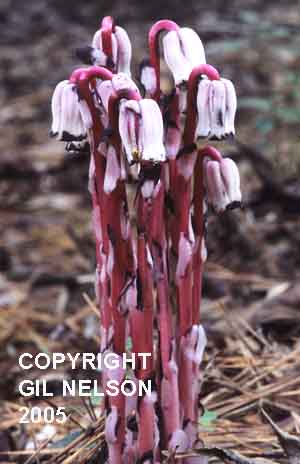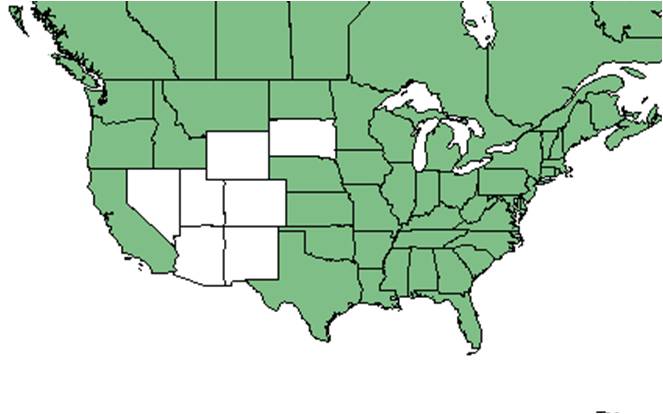Difference between revisions of "Monotropa uniflora"
| Line 28: | Line 28: | ||
===Phenology=== <!--Timing off flowering, fruiting, seed dispersal, and environmental triggers. Cite PanFlora website if appropriate: http://www.gilnelson.com/PanFlora/ --> | ===Phenology=== <!--Timing off flowering, fruiting, seed dispersal, and environmental triggers. Cite PanFlora website if appropriate: http://www.gilnelson.com/PanFlora/ --> | ||
| + | This species has been observed flowering and fruuting in February, March, and October through December (FSU Herbarium). | ||
| + | |||
===Seed dispersal=== | ===Seed dispersal=== | ||
===Seed bank and germination=== | ===Seed bank and germination=== | ||
Revision as of 16:00, 20 July 2015
| Monotropa uniflora | |
|---|---|

| |
| Photo was taken by Gil Nelson | |
| Scientific classification | |
| Kingdom: | Plantae |
| Division: | Magnoliophyta - Flowering plants |
| Class: | Magnoliopsida – Dicotyledons |
| Order: | Ericales |
| Family: | Monotropaceae |
| Genus: | Monotropa |
| Species: | M. uniflora |
| Binomial name | |
| Monotropa uniflora L. | |

| |
| Natural range of Monotropa uniflora from USDA NRCS Plants Database. | |
Contents
Description
Common name: Indianpipe
Distribution
Ecology
Habitat
This species can be found in mixed woodlands, mesic bluffs, ravine edges, along swamps, pine scrub, and hardwood hammock edges (FSU Herbarium). Observed growing in shaded areas, M. uniflora occurs in moist and dry sand, sandy loam, and rich hummus (FSU Herbarium). It is also found in human discturbed habitats such as hiking trails, residential backyards, and front lawns (FSU Herbarium).
Phenology
This species has been observed flowering and fruuting in February, March, and October through December (FSU Herbarium).